Research outline
Research outline
In Hokuriku region (particularly Toyama, Ishikawa, and Fukui Prefecture) along the coastline of the Sea of Japan, bridges constructed in the coastal areas are significantly affected by the diffusion of flying salinity due to seasonal winds (see Photo 1). Besides, since this region is cold and snowy during winter, the de-icing agents a sprayed on the main road (see Photo 2). Moreover, this region also has a wide distribution of andesite (see Photo 3), which is proved as the primary cause of Alkali-aggregate reaction, especially Alkali-Silica Reaction (from now on ASR), in many areas of Japan (see Figure 1). In addition, the area subjected to frost damage is easy to expand in the high altitudes of the mountainous regions.
As consequences of this severe circumstances, salt damage deterioration due to flying salinity in the coastal region (see Photo 4) and spraying of the de-icing agents during winter (see Photo 5), ASR-induced degradation in the bridges utilizing reactive aggregates, and frost damage in mountainous areas occur in many structures among Hokuriku region. Moreover, complex deterioration is also generated in many bridges (see Photo 7).
Unlike the aging deterioration, these degradations occur early, and from the viewpoint of the urgency and the importance, it is necessary to establish a new management system which is entirely different from the basic ideas of former maintenance concepts and its corresponding countermeasures.
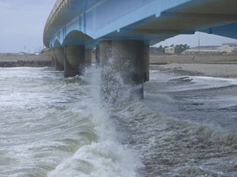 |
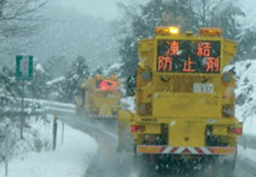 |
| Photo 1 – Dispersion status of salt by monsoon | Photo 2 – De-icing salt |
 |
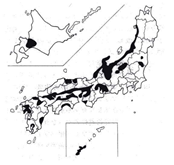 |
| Photo 3 – Crushed Andesitic Stone in concrete | Figure 1 – Map of ASR-affected Bridges in Japan |
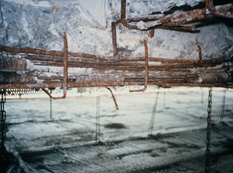 |
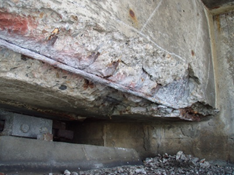 |
| Photo 4 – Salt damage due to flying salinity in coastal areas | Photo 5 – Salt damage due to using Anti-freezing agents |
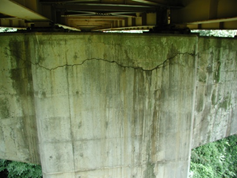 |
 |
| Photo 6 – Degradation due to ASR | Photo 7 – Complex degradation due to Salt damage and ASR |
In this research and development, the concrete bridges, which have suffered early deterioration, are considered as the objective structures, the type and degree of degradation are classified according to each part of a bridge (superstructure and substructure). Furthermore, a sequential flow, i.e., inspection – diagnosis – monitoring → evaluation – judgment → countermeasures (reinforce, repair, renovation), is utilized on the road bridges of Hokuriku region and proposed as the basis maintenance management system of the public – private service organization of the industry and academia. In this way, this approach can be enhanced and applied to areas subjected to the same early deterioration. For the above purpose, this study is categorized into working groups ,W1 – W7 as explained below.
WG(1) Elucidating the degradation mechanism due to salt damage and evaluating material properties and performance of structures
WG(2) Elucidating the degradation mechanism due to ASR and evaluating material properties and performance of structures
WG(3) Developing the evaluation and monitoring technology of the material of bridge and structural performance
WG(4) Developing repair – strengthen technology based on evaluating the health of superstructure, material, and structural performance
WG(5) Evaluating the efficiency of reinforce – repair material and developing a new simple and economical technology
WG(6) Establishing a maintenance management system
WG(7) General integration
This research is operated by the association between the Research and Development Group (Kanazawa University) and the Joint Research Group ((1) Kanazawa Institute of Technology, (2) Ishikawa National College of Technology, (3) Nagaoka University of Technology, (3) University of Fukui) shown in Figure 2. Besides, receiving not only the supports from ‘academic’ but also those of ‘industry’, ‘government’ and ‘people’ of Hokuriku region, we have proposed the public-private and
industry-academia research support system as shown in Figure 3.
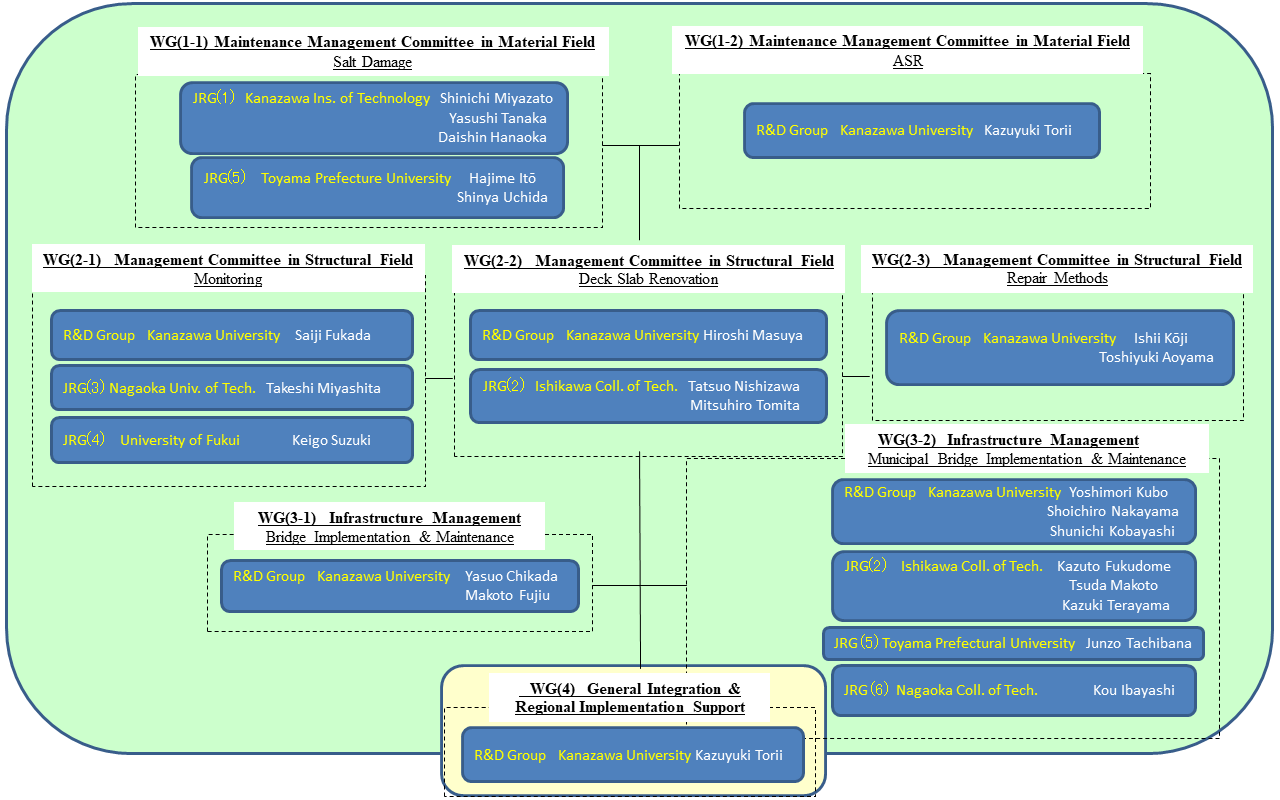
Figure 2. Organization Chart
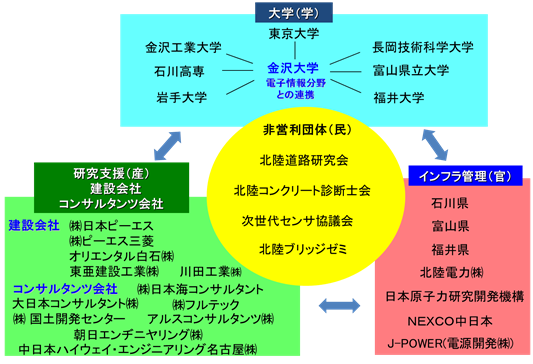
Figure 3. Research support system












